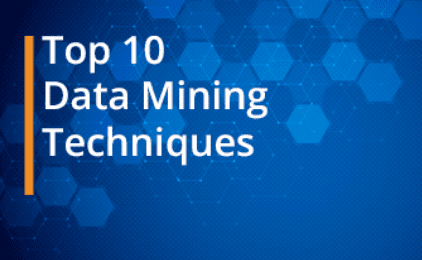Top 10 Trends in Data Mining
If you look closely, you will notice that the current data mining software landscape provides some critical insights into the prevalence and adoption of data mining across industries. As a result, from a business standpoint, you can employ a variety of data mining techniques to increase revenues, cut costs, improve customer relationships, and lower business risks.
Now, to give you deeper insight into the data mining process and how it is being used across various industries to leverage their objectives, I present to you the top trends in data mining today.
1. Embedded Data Mining
Embedded data mining is a method of executing the power of data mining directly in the database via an application. This process, which has been well received in the BI marketplace, opens up new realms of possibilities for creating unique value. However, for many businesses, the risk of implementation failure remains a barrier.
2. Automation In Data Mining
Automation in data mining is a new avenue that is assisting organizations in solving problems, forecasting trends, minimizing risks, and uncovering new opportunities.
Because it forms a robust decision-making process, the process allows you to optimize the data extraction procedure, detect inconsistencies or inaccuracies in data, and even aid in the comprehension of critical events in highly regulated businesses.
3. Data Mining in Pharmaceutical And Health Care
Data mining is becoming increasingly popular in the healthcare industry, owing to the numerous benefits it provides to all parties involved.
Aside from anticipating various diseases, assisting with diagnosis, and advising clinicians on clinical decisions, it can now be used to improve clinical decision-making, measure treatment efficacy, and assist hospitals with administrative tasks.
4. Biological data mining
Biologists have amassed a massive amount of data in their quest to understand the biological processes that underpin disease pathways. Through the use of data mining, biologists are now able to discover new knowledge that can be translated into clinical applications and deal with noisy and incomplete data, processing compute-intensive tasks, and integrating multiple data sources.
5. Data Mining for Vendor Consolidation
Businesses today are actively using data mining techniques to consolidate their vendors and decide who to work with based on a careful analysis of their packaging needs, process, and customer requirements.
6. Spatial and Geographic Data Mining
The method lays the groundwork for mapping and analysis, which is used in science and almost every major industry. Improved communication and efficiency, as well as better management and decision-making, are also advantages.
7. Multimedia Data Mining
The process of extracting data from various types of multimedia sources that store and manage large collections of multimedia objects to discover interesting patterns is known as multimedia data mining. This method can be used for clustering and classification, performing similarity checks, and identifying associations.
8. Ubiquitous Data Mining
Ubiquitous Data Mining is the process of extracting hidden classifiers, clusters, frequent item sets, and association rules from a variety of mobile and stationary data sources. This type of data mining has enormous potential in a variety of industries, particularly in the study of human-computer interaction.
9. Distributed Data Mining
Distributed data mining is concerned with the analysis of distributed data and the development of algorithmic solutions to perform various data analysis and mining operations in a distributed manner. Because the workload is distributed across multiple sites, this process can handle large datasets that are beyond the capability of data mining.
10. Time Series and Sequence Data Mining
A time series is a set of data points that appear in a particular order over time. Data mining in time series and sequences allows you to use your natural ability to visualize the shape of real-time data. This process is very useful in analyzing random events that occur outside of the normal sequence of events.



































